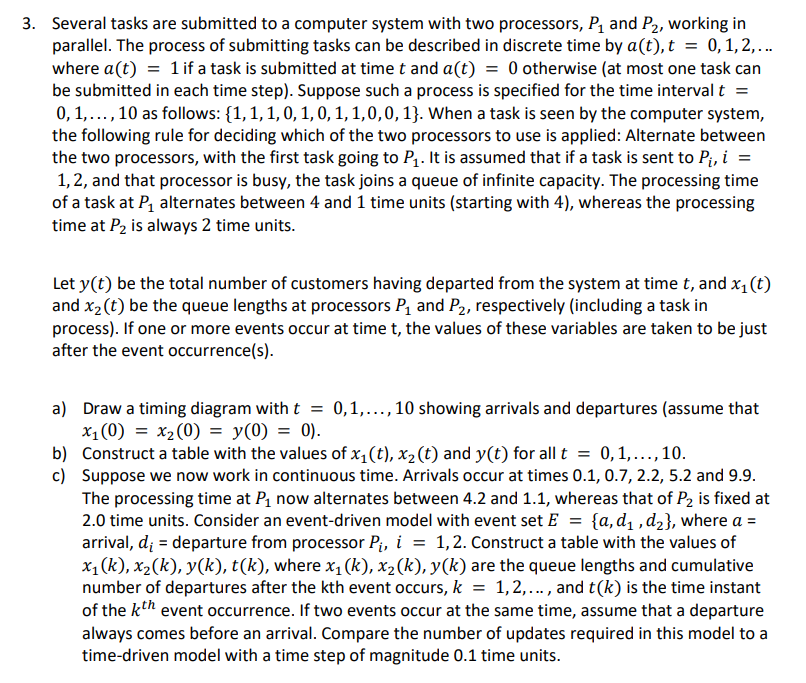Answered step by step
Verified Expert Solution
Question
1 Approved Answer
Several tasks are submitted to a computer system with two processors, P 1 and P 2 , working in parallel. The process of submitting tasks
Several tasks are submitted to a computer system with two processors, and working in
parallel. The process of submitting tasks can be described in discrete time by dots
where if a task is submitted at time and otherwise at most one task can
be submitted in each time step Suppose such a process is specified for the time interval
dots, as follows: When a task is seen by the computer system,
the following rule for deciding which of the two processors to use is applied: Alternate between
the two processors, with the first task going to It is assumed that if a task is sent to
and that processor is busy, the task joins a queue of infinite capacity. The processing time
of a task at alternates between and time units starting with whereas the processing
time at is always time units.
Let be the total number of customers having departed from the system at time and
and be the queue lengths at processors and respectively including a task in
process If one or more events occur at time the values of these variables are taken to be just
after the event occurrences
a Draw a timing diagram with dots, showing arrivals and departures assume that
b Construct a table with the values of and for all dots,
c Suppose we now work in continuous time. Arrivals occur at times and
The processing time at now alternates between and whereas that of is fixed at
time units. Consider an eventdriven model with event set where
arrival, departure from processor Construct a table with the values of
where are the queue lengths and cumulative
number of departures after the kth event occurs, dots, and is the time instant
of the event occurrence. If two events occur at the same time, assume that a departure
always comes before an arrival. Compare the number of updates required in this model to a
timedriven model with a time step of magnitude time units.

Step by Step Solution
There are 3 Steps involved in it
Step: 1

Get Instant Access to Expert-Tailored Solutions
See step-by-step solutions with expert insights and AI powered tools for academic success
Step: 2

Step: 3

Ace Your Homework with AI
Get the answers you need in no time with our AI-driven, step-by-step assistance
Get Started


